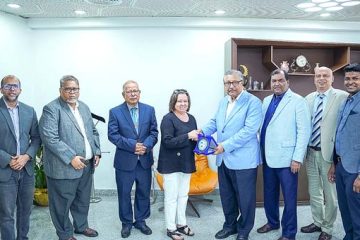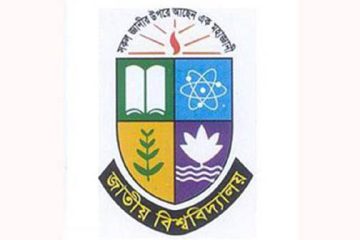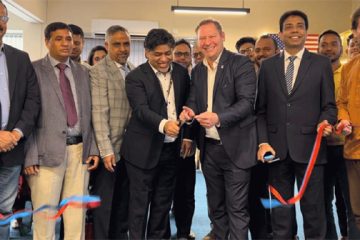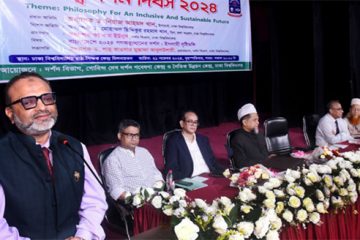Unplanned use of groundwater
An environmental degradation is set to engulf the entire Barind region of greater Rajshahi due to unplanned and indiscriminate use of underground water for irrigation. At the same time, drying up of the major rivers crisscrossing the region, including Rajshahi, Chapainawabganj and Naogaon districts, indiscriminate felling of trees and deforestation are also adding to the situation. Due to deforestation, there has been less rainfall here for the last several years. Drying up of the rivers and tributaries and excessive use of underground water have driven deep the subterranean water level adding to the desertification process. Already shortage of drinking water at ‘Rar Barind’( Hard Barind tract consisting of red-soil) region like Nazipur, Niamatpur, Sapahar and Porsha upazilas has taken to such an extent that it is tough for any visitor to manage a glass of water to drink from any villager there. According to sources of Hydrology Department under Water Development Board of Rajshahi, the water level of the river Padma acts as a major determinant for surface as well as underground water levels.
But for the last four decades, the water level of the Padma has continually decreased turning all of its tributaries dry except during the monsoon when excess water is disposed off through Farakka barrage. Due to excessive use of deep tube-wells, subterranean aquifer level has gone down to 28.96 to 29 metres this year which was 22.60 to 22.70 metres just three years ago in 2010 indicating fall in water level nearly by six metres.
Kausar Ali, Water Record Keeper of Barind Project (BMDA) of Tanore upazila, informed, in the last 13 years, water level has fallen by nine metres there.
Even, in the low Barind areas like Tanore, Godagari and Paba upazilas, farmers are now not getting sufficient water for irrigation.
As a result, they have already started to change their cropping pattern which requires less water. Instead of cultivating the crops dependent heavily on water, like boro paddy, they are switching to less-water dependent crops like wheat, lentil, maize, potato and pulses.
According to Agriculture Extension Department (DAE) sources in Rajshahi, the cultivation of wheat increased to 32,660 hectares as against the target of 28,660 hectares in Barind region in 2012 whereas the cultivation of water based boro paddy decreased to 68,900 hectares as against the targeted 74,896 hectares.
Asit Kumar Karmaker, sub-assistant engineer of Public HealthEngineering Department, Godagari informed, common hand tubewells were not working there and people have to depend fully on deep tube-well or semi-deep tube-well Tara pump driven water.
Absence of forest in the region was also a factor for less rainfall.
It is learnt, just 150 years ago the region was covered with deep forest. Shahidul Islam, scientific officer of Meteorological Department, Rajshahi, informed average rainfall from 2005 to 2008(four years) in Rajshahi was 1,309 millimetres whereas the average rainfall from 2009 to 2012 decreased to 1,123 millimetres.
Professor Dr Sarwar Jahan of the Institute of Environmental Sciences, Rajshahi University while talking to The Independent said, Barind project has brought solvency for the farmers by allowing them to grow three crops round the year instead of one crop earlier but the environmental damage due to excessive use of subterreanean water was not considered. As a result, the region is going to face desertification. He mentioned only a crush programme by stopping use of deep tube-well water, massive afforestation, dredging of the rivers and re-excavation of the derelict ponds and water bodies might be a solution to the ensuing natural catastrophe.
-With The Independent input




















